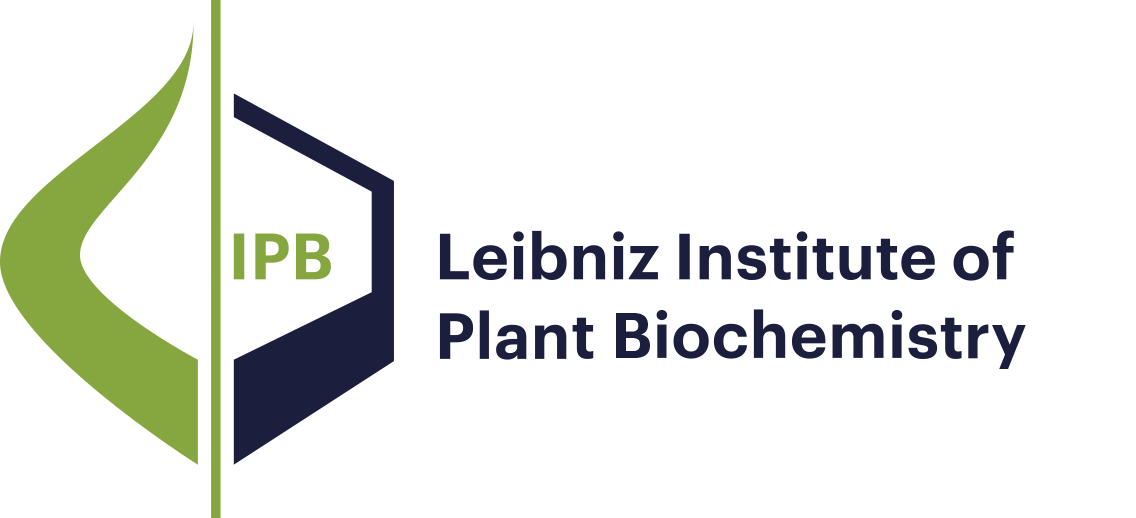- Results as:
- Print view
- Endnote (RIS)
- BibTeX
- Table: CSV | HTML
Publications
Publications
Publications
Publications
This page was last modified on 27 Jan 2025 27 Jan 2025 .
Research Mission and Profile
Molecular Signal Processing
Bioorganic Chemistry
Biochemistry of Plant Interactions
Cell and Metabolic Biology
Independent Junior Research Groups
Program Center MetaCom
Publications
Good Scientific Practice
Research Funding
Networks and Collaborative Projects
Symposia and Colloquia
Alumni Research Groups
Publications
The chemical composition of root exudates strongly impacts the interactions of plants with microorganisms in the rhizosphere and the efficiency of nutrient acquisition. Exudation of metabolites is in part mediated by ATP-binding cassette (ABC) transporters. In order to assess the contribution of individual ABC transporters to root exudation, we performed an LC-MS based non-targeted metabolite profiling of semi-polar metabolites accumulating in root exudates of Arabidopsis thaliana plants and mutants deficient in the expression of ABCG36 (PDR8/PEN3), ABCG37 (PDR9) or both transporters. Comparison of the metabolite profiles indicated distinct roles for each ABC transporter in root exudation. Thymidine exudation could be attributed to ABCG36 function, whereas coumarin exudation was strongly reduced only in ABCG37 deficient plants. However, coumarin exudation was compromised in abcg37 mutants only with respect to certain metabolites of this substance class. The specificity of ABCG37 for individual coumarins was further verified by a targeted LC-MS based coumarin profiling method. The response to iron deficiency, which is known to strongly induce coumarin exudation, was also investigated. In either treatment, the distribution of individual coumarins between roots and exudates in the investigated genotypes suggested the involvement of ABCG37 in the exudation specifically of highly oxygenated rather than monohydroxylated coumarins.
Publications
Environmental cues profoundly modulate cell proliferation and cell elongation to inform and direct plant growth and development. External phosphate (Pi) limitation inhibits primary root growth in many plant species. However, the underlying Pi sensory mechanisms are unknown. Here we genetically uncouple two Pi sensing pathways in the root apex of Arabidopsis thaliana. First, the rapid inhibition of cell elongation in the transition zone is controlled by transcription factor STOP1, by its direct target, ALMT1, encoding a malate channel, and by ferroxidase LPR1, which together mediate Fe and peroxidase-dependent cell wall stiffening. Second, during the subsequent slow inhibition of cell proliferation in the apical meristem, which is mediated by LPR1-dependent, but largely STOP1–ALMT1-independent, Fe and callose accumulate in the stem cell niche, leading to meristem reduction. Our work uncovers STOP1 and ALMT1 as a signalling pathway of low Pi availability and exuded malate as an unexpected apoplastic inhibitor of root cell wall expansion.
Publications
Chemistry assigns phosphate (Pi) dominant roles in metabolism; however, it also renders the macronutrient a genuinely limiting factor of plant productivity. Pi bioavailability is restricted by low Pi mobility in soil and antagonized by metallic toxicities, which force roots to actively seek and selectively acquire the vital element. During the past few years, a first conceptual outline has emerged of the sensory mechanisms at root tips, which monitor external Pi and transmit the edaphic cue to inform root development. This review highlights new aspects of the Pi acquisition strategy of Arabidopsis roots, as well as a framework of local Pi sensing in the context of antagonistic interactions between Pi and its major associated metallic cations, Fe3+ and Al3+.
Publications
The large WRKY transcription factor family is mainly involved in regulating plant immune responses. Arabidopsis WRKY33 is a key transcriptional regulator of hormonal and metabolic processes towards Botrytis cinerea strain 2100 infection and is essential for resistance. In contrast to B. cinerea strain 2100, the strain B05.10 is virulent on wild‐type (WT) Col‐0 Arabidopsis plants highlighting the genetic diversity within this pathogen species. We analysed how early WRKY33‐dependent responses are affected upon infection with strain B05.10 and found that most of these responses were strongly dampened during this interaction. Ectopic expression of WRKY33 resulted in complete resistance towards this strain indicating that virulence of B05.10, at least partly, depends on suppressing WRKY33 expression/protein accumulation. As a consequence, the expression levels of direct WRKY33 target genes, including those involved in the biosynthesis of camalexin, were also reduced upon infection. Concomitantly, elevated levels of the phytohormone abscisic acid (ABA) were observed. Molecular and genetic studies revealed that ABA negatively influences defence to B05.10 and effects jasmonic acid/ethylene (JA/ET) and salicylic acid (SA) levels. Susceptibility/resistance was determined by the antagonistic effect of ABA on JA, and this crosstalk required suppressing WRKY33 functions at early infection stages. This indicates that B. cinerea B05.10 promotes disease by suppressing WRKY33‐mediated host defences.
This page was last modified on 27 Jan 2025 27 Jan 2025 .

